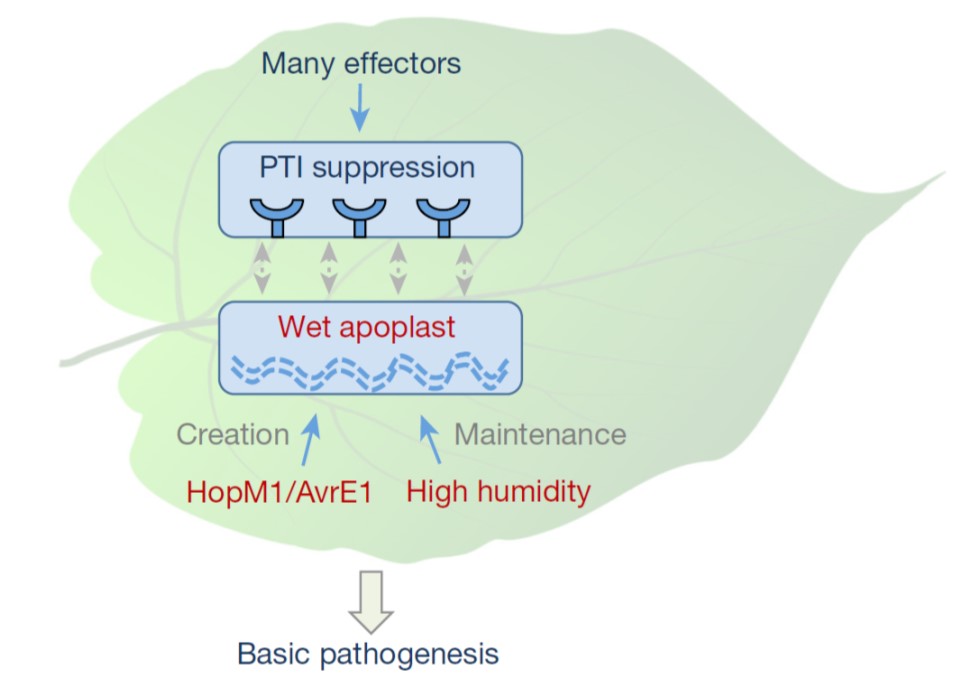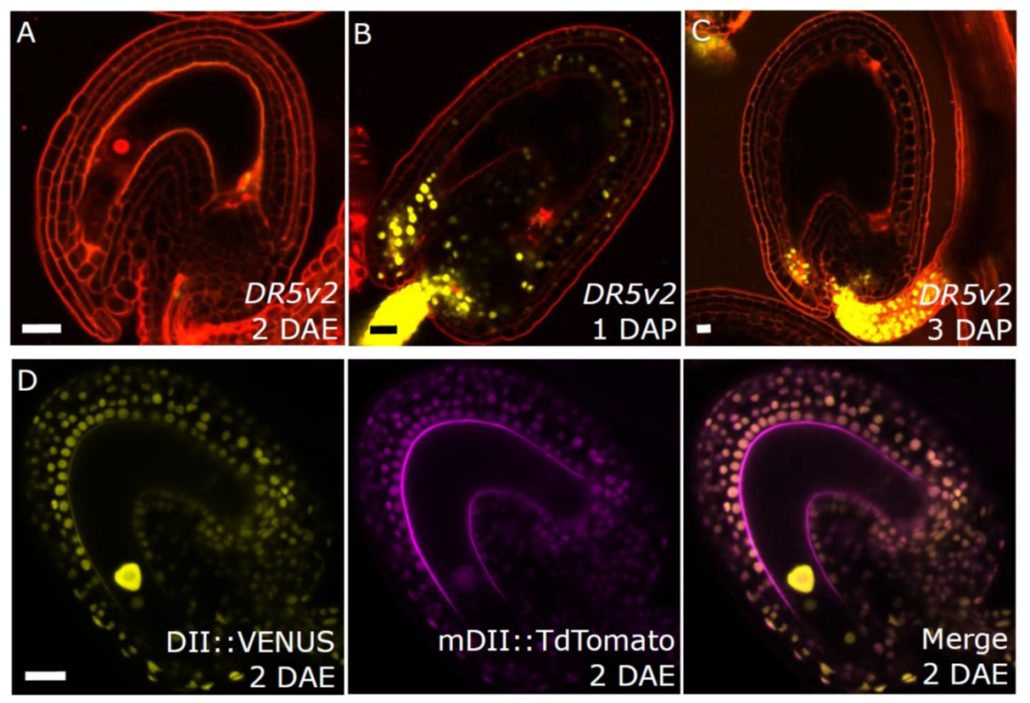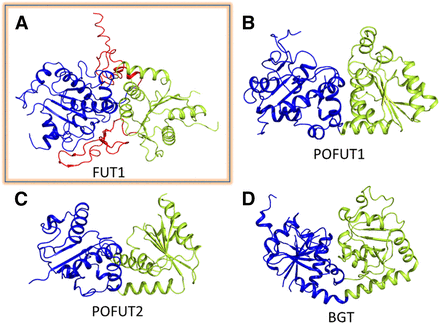
Bacteria establish an aqueous living space in plants crucial for virulence ($)
Plant Science Research Weekly, Research0 Comments
/
Although it is widely accepted that high humidity has a strong influence on plant diseases of the phyllosphere (the above-ground portions of the plant), the molecular basis is not understood. Xin et al. report that an important step in bacterial infection of the phyllosphere is a pathogen-driven…

Auxin production in the endosperm drives seed coat development in Arabidopsis
Plant Science Research Weekly, Research
Seed vitality is critical for plants’ evolutionary survival and food production by economic crops such as rice, wheat, etc. Seed formation is preceded by well-coordinated events involving mainly fertilization, endosperm and seed coat formation in chronological order. How is the signal relayed from…

Review: Programmed Cell Death in Development and Disease
Plant Science Research Weekly, Research
Programmed cell death (PCD) is an active process that occurs as part of normal development and also contributes to defense against pathogens. While there are many similarities in developmental PCD (dPCD) and pathogen-triggered PCD (pPCD), there are also differences. Huysmans et al. review and contrast…

Another Step Closer to Understanding Plant Cell Wall Biosynthesis: The Crystal Structure of FUCOSYLTRANSFERASE1[
Research, The Plant Cell, The Plant Cell: In Brief
IN BRIEF by Nancy R. Hofmann [email protected]
Plant cell walls consist of cellulose microfibrils embedded in a matrix of polymers including hemicelluloses. As one of the main hemicelluloses in the cell walls of dicots, xyloglucan is an important target of study to understand plant cell walls…

A Breakthrough in Monocot Transformation Methods
Research, The Plant Cell, The Plant Cell: In Brief
IN BRIEF by Nancy Hofmann [email protected]
The ability to generate transgenic plants without regard to cultivar or genotype can be considered a holy grail of cereal crop transformation. Despite years of effort, it has been remarkably difficult to develop efficient methods for transformation of…

Examination of Protein Complexes Gets SiMPull
Research, The Plant Cell, The Plant Cell: In BriefIN BRIEF by Jennifer Mach [email protected]
Assessing protein-protein interactions remains a fundamental challenge for plant biologists. Current methods such as coimmunoprecipitation (co-IP), yeast two-hybrid, bimolecular fluorescence complementation (BiFC), and others can produce artifacts and also yield…

Divide and Conquer: Introducing a Novel Player in Cell Plate Formation
Research, The Plant Cell, The Plant Cell: In BriefIN BRIEF by Kathleen L. Farquharson [email protected]
Polysaccharide-rich cell walls are a distinguishing feature of plants that influence many aspects of growth and development, including cell division. Whereas contractile rings pinch dividing cells into two daughter cells in other eukaryotes,…

Invisible No Longer: Peptidoglycan in Moss Chloroplasts
Research, The Plant Cell, The Plant Cell: In BriefIN BRIEF by Nancy Hofmann [email protected]
Most bacteria have a peptidoglycan layer between the inner and outer membranes (reviewed in Typas et al., 2012). The cyanobacterial endosymbiont that gave rise to plastids would have contained such a peptidoglycan wall including d-amino acids. Indeed, peptidoglycan…

